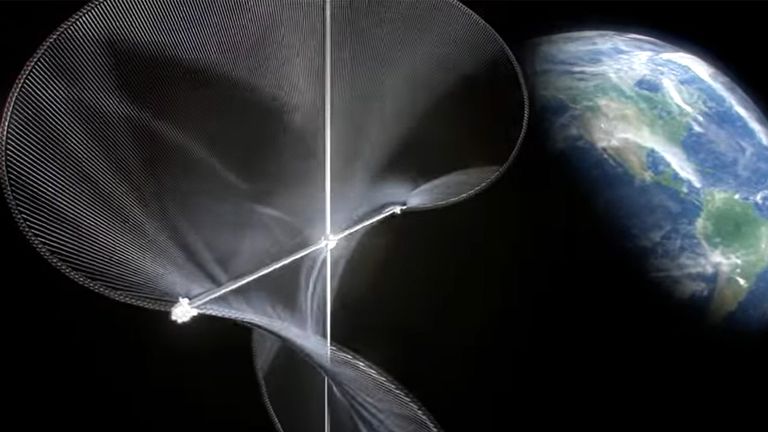Scientists are proposing an ambitious project to power Earth with solar energy from space.
This European Space Agency (ESA) – including the UK – are discussing the creation of a solar farm On track at the two-day conference in Paris.
SOLARIS project aims to harvest large areas of sunlight spaceconverting it to microwave energy (similar to high-frequency radio waves in a microwave oven), which is then transmitted to Earth.
A large number of antennas on Earth receive the beam, and the energy is converted into Electricity.
The advantages of space-based solar power (SBSP) are enormous, as microwaves can penetrate clouds in the Earth’s atmosphere, and sunlight in space is constantly available — not only during the day — but more intensely.
but the UK also has own separate proposal. Funding worth £6 million has been provided to develop SBSP technology, which aims to contribute to the UK’s net zero target.
According to research commissioned by the government by consultants Frazer-Nash, “an operating system could be developed by 2040” and could “meet a significant proportion of the UK’s energy needs by the early 2040s”.
But it will also come at a huge cost – up to £17.3bn.
Dr Mamatha Maheshwarappa, Head of Payload Systems at the UK Space Agency, told Sky News: “This has to be a joint (public and private) enterprise. The government can fund some of the initial de-risking activities, but then that needs to be backed by private investment.”
More from Sky News:
UK Space Agency researching space-based solar power
The principle of SBSP has been demonstrated on a small scale.
In September, Airbus beamed microwaves between two points within a distance of 36 meters, producing green hydrogen and bringing a model city to life.
But there are also challenges.
“If the satellites were to collect sunlight, they would need to measure about 2 kilometers in diameter to achieve the same power level as a nuclear power plant,” said Jean-Dominique Coster of the Airbus team.
The ESA acknowledges that a lot of energy can be lost during conversion and “launch,” though scientists still believe it’s economically feasible for even as little as 10% of the energy to reach Earth.
In the meantime, experts need to mitigate health concerns caused by beaming microwaves into the atmosphere — effects that haven’t been fully explored — by conducting tests to ensure there are no risks to plants and animals.

